1. Gibbons RJ, Balady GJ, Bricker JT, Chaitman BR, Fletcher GF, Froelicher VF, et al. ACC/AHA 2002 guideline update for exercise testing: summary article. A report of the American College of Cardiology/American Heart Association Task Force on Practice Guidelines (Committee to Update the 1997 Exercise Testing Guidelines). J Am Coll Cardiol. 2002; 40(8):1531–1540. PMID:
12392846.
2. Levine GN, Bates ER, Blankenship JC, Bailey SR, Bittl JA, Cercek B, et al. 2011 ACCF/AHA/SCAI Guideline for Percutaneous Coronary Intervention: a report of the American College of Cardiology Foundation/American Heart Association Task Force on Practice Guidelines and the Society for Cardiovascular Angiography and Interventions. Circulation. 2011; 124(23):e574–e651. PMID:
22064601.
3. Wolk MJ, Bailey SR, Doherty JU, Douglas PS, Hendel RC, Kramer CM, et al. ACCF/AHA/ASE/ASNC/HFSA/HRS/SCAI/SCCT/SCMR/STS 2013 multimodality appropriate use criteria for the detection and risk assessment of stable ischemic heart disease: a report of the American College of Cardiology Foundation Appropriate Use Criteria Task Force, American Heart Association, American Society of Echocardiography, American Society of Nuclear Cardiology, Heart Failure Society of America, Heart Rhythm Society, Society for Cardiovascular Angiography and Interventions, Society of Cardiovascular Computed Tomography, Society for Cardiovascular Magnetic Resonance, and Society of Thoracic Surgeons. J Am Coll Cardiol. 2014; 63(4):380–406. PMID:
24355759.
4. Eisenberg MJ, Schechter D, Lefkovits J, Goudreau E, Deligonul U, Mak KH, et al. Utility of routine functional testing after percutaneous transluminal coronary angioplasty: results from the ROSETTA registry. J Invasive Cardiol. 2004; 16(6):318–322. PMID:
15156002.
5. Babapulle MN, Diodati JG, Blankenship JC, Huynh T, Cugno S, Puri R, et al. Utility of routine exercise treadmill testing early after percutaneous coronary intervention. BMC Cardiovasc Disord. 2007; 7(1):12. PMID:
17394661.

6. Eisenberg MJ, Wilson B, Lauzon C, Huynh T, Eisenhauer M, Mak KH, et al. Routine functional testing after percutaneous coronary intervention: results of the aggressive diagnosis of restenosis in high-risk patients (ADORE II) trial. Acta Cardiol. 2007; 62(2):143–150. PMID:
17536602.
7. Georgoulias P, Demakopoulos N, Tzavara C, Giannakou S, Valotassiou V, Tsougos I, et al. Long-term prognostic value of Tc-99m tetrofosmin myocardial gated-SPECT imaging in asymptomatic patients after percutaneous coronary intervention. Clin Nucl Med. 2008; 33(11):743–747. PMID:
18936603.

8. Acampa W, Petretta M, Florimonte L, Mattera A, Cuocolo A. Prognostic value of exercise cardiac tomography performed late after percutaneous coronary intervention in symptomatic and symptom-free patients. Am J Cardiol. 2003; 91(3):259–263. PMID:
12565079.

9. Georgoulias P, Tzavara C, Demakopoulos N, Giannakou S, Valotassiou V, Tsougos I, et al. Incremental prognostic value of (99m)Tc-tetrofosmin myocardial SPECT after percutaneous coronary intervention. Ann Nucl Med. 2008; 22(10):899–909. PMID:
19142709.

10. de la Morena G, Sanchez-Muñoz JJ, Lopez Candel J, Pico-Aracil F, Ruiperez JA. Early and late exercise testing. Usefulness after percutaneous transluminal coronary angioplasty. Chest. 1993; 103(2):391–395. PMID:
8432125.
11. Capodanno D, Tamburino C. Integrating the Synergy between percutaneous coronary intervention with Taxus and Cardiac Surgery (SYNTAX) score into practice: use, pitfalls, and new directions. Am Heart J. 2011; 161(3):462–470. PMID:
21392599.

12. Malkin CJ, George V, Ghobrial MS, Krishnan A, Siotia A, Raina T, et al. Residual SYNTAX score after PCI for triple vessel coronary artery disease: quantifying the adverse effect of incomplete revascularisation. EuroIntervention. 2013; 8(11):1286–1295. PMID:
23538157.

13. Fletcher GF, Balady GJ, Amsterdam EA, Chaitman B, Eckel R, Fleg J, et al. Exercise standards for testing and training: a statement for healthcare professionals from the American Heart Association. Circulation. 2001; 104(14):1694–1740. PMID:
11581152.
14. Thygesen K, Alpert JS, Jaffe AS, Simoons ML, Chaitman BR, White HD, et al. Third universal definition of myocardial infarction. Eur Heart J. 2012; 33(20):2551–2567. PMID:
22922414.

15. Goldman LE, Okrainec K, Eisenberg MJ, Schechter D, Lefkovits J, Goudreau E, et al. Six-month outcomes after single- and multi-lesion percutaneous coronary intervention: results from the ROSETTA registry. Can J Cardiol. 2004; 20(6):608–612. PMID:
15152290.
16. Farooq V, Serruys PW, Bourantas CV, Zhang Y, Muramatsu T, Feldman T, et al. Quantification of incomplete revascularization and its association with five-year mortality in the synergy between percutaneous coronary intervention with taxus and cardiac surgery (SYNTAX) trial validation of the residual SYNTAX score. Circulation. 2013; 128(2):141–151. PMID:
23766350.

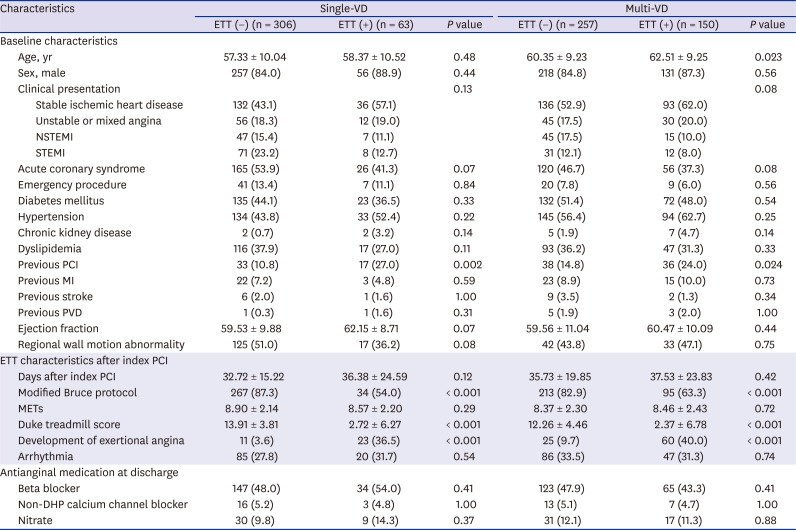
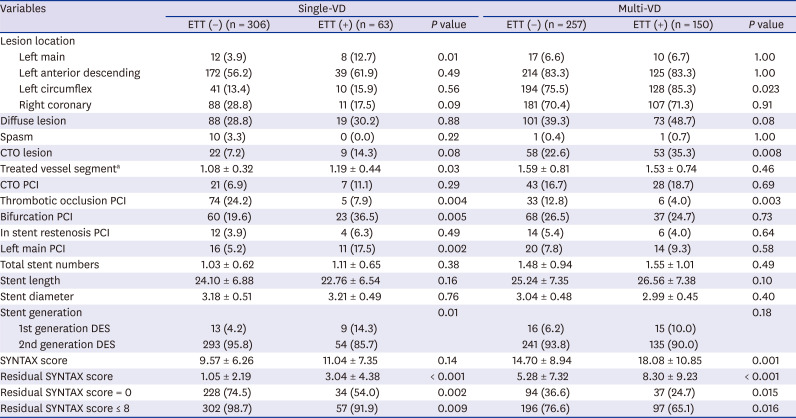

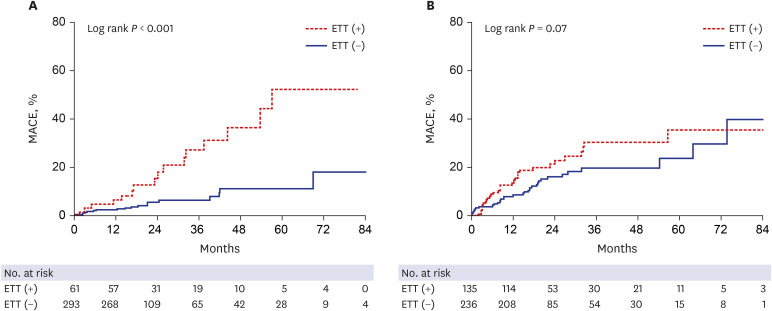
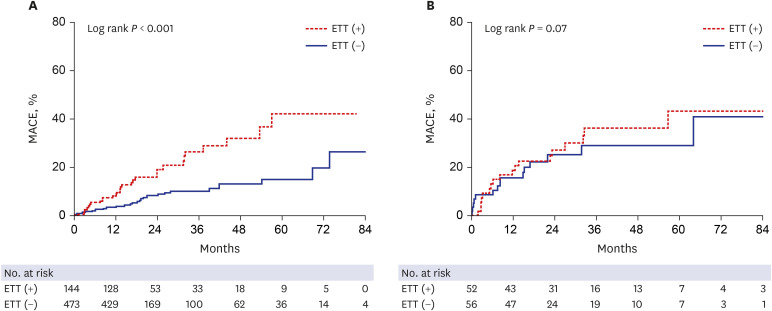






 PDF
PDF Citation
Citation Print
Print



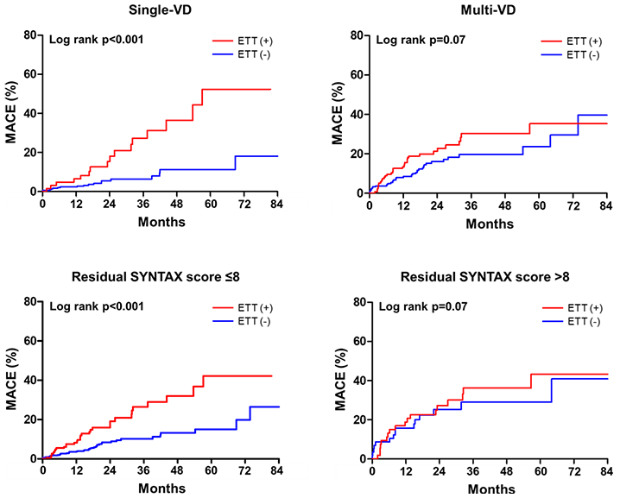
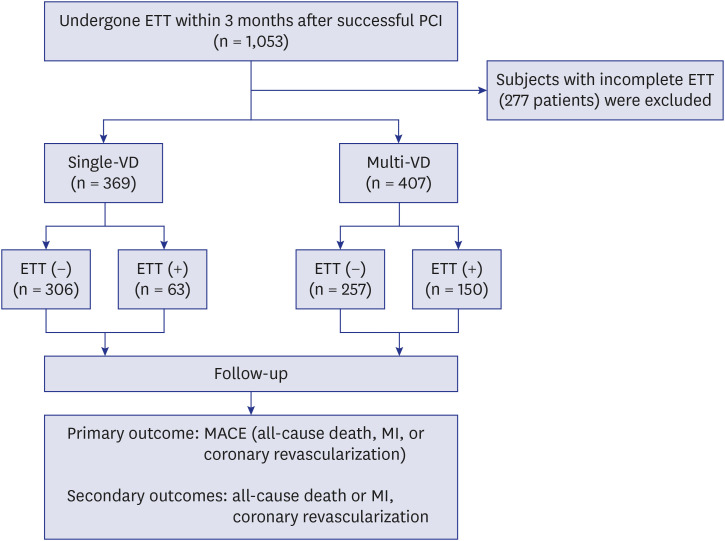
 XML Download
XML Download